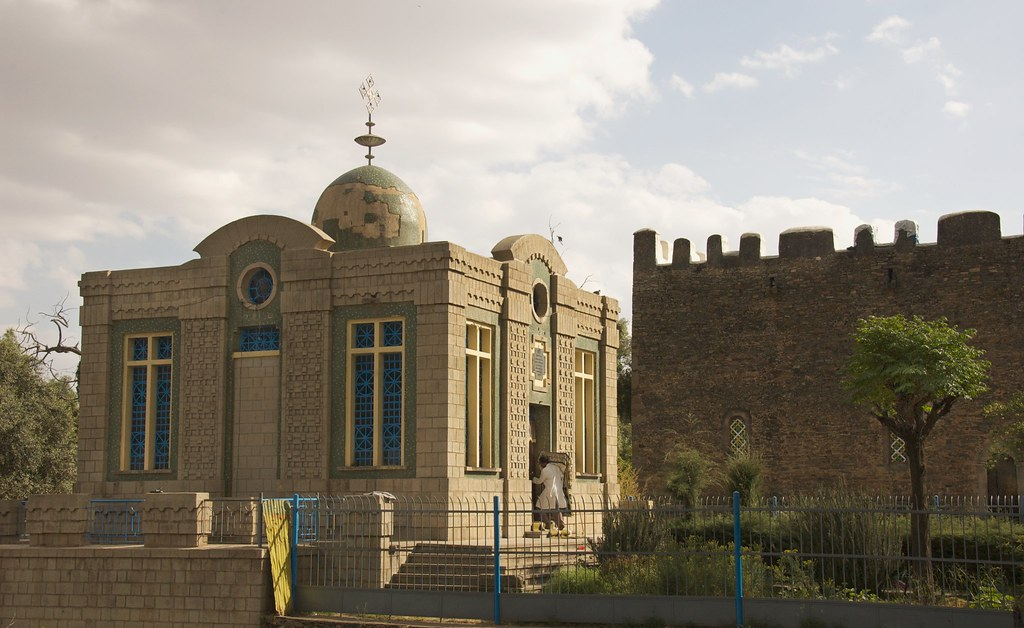Eritrea Denies Its Role in the Massacre of Ethiopian Citizens
The Church of the Tablet in the city of Axum, which supposedly holds the Ark of the Covenant, is a key landmark and point of pilgrimage for many orthodox Christians in Ethiopia and across the world. Photo Source
Eritrean Minister of Information Yemane G. Meskel dismissed Amnesty International’s report on February 26 in which the organization wrote that the Eritrean army’s mass killings in Ethiopia’s holy city of Axum “may amount to a crime against humanity.” Such allegations refer to reported massacres in November 2020 when Ethiopian and Eritrean troops brutally attacked Tigray civilians following the Tigray People’s Liberation Front’s capture of Ethiopian army camps.
The Recent Resurgence of a Long-Time Conflict
The Ethiopian military and Tigray militias have been at odds since Ethiopian Prime Minister Abiy Ahmed forced the Tigray People's Liberation Front (TPLF) out of the federal government by dismantling its ruling coalition for 30 years, the Ethiopian Revolutionary Democratic Front. The EPRDF was a coalition of ethnically-based political parties. The TPLF dominated the coalition despite being an ethnic minority, with Tigrayans making up only 6 percent of Ethiopia's population. Ahmed accused the group of carrying out ethnic-based violence across the country and aimed to make the country’s political system more representative of the Ethiopian people by instating a new party, the Prosperity Party, in which citizens would be represented more fairly. Thus, in 2018, Abiy Ahmed stripped the TPLF of its power.
However, conflict in Ethiopia reached a new peak recently. Ethiopian and Eritrean troops began an offensive attack on Axum, Tigray’s holy city, on November 4, 2020. This war was brought on by Ahmed’s extension of the federal government’s electoral term in which he cited the pandemic as a reason for the current government’s prolonged power. The TPLF declared this decision unconstitutional and held its own regional elections with a new electoral commission. The TPLF then proceeded to attack the Ethiopian military's Northern Command in Tigray, which Ahmed declared a highly treasonous act before ordering the military to attack the TPLF.
A civil servant reported, “This attack continued for five hours, and was non-stop. People who were at churches, cafes, hotels, and their residence died. There was no retaliation from any armed force in the city—it literally targeted civilians.” November 16 saw the shelling of Axum from both Ethiopian and Eritrean forces. On November 28, the TPLF attempted to attack Eritrean troops nearby but failed, provoking another series of brutal killings of civilians in the city which lasted about two days.
Amnesty International’s Recent Report
Amnesty International compiled information from 41 witnesses and survivors of the massacre and published an article on February 26, in which they say that Eritrean troops slaughtered Axum civilians. The exact number remains unknown due to a lack of media access to the region and a lack of survivors, but the UN estimates that at least several hundred people were killed.
Although both Ethiopian and Eritrean troops are currently being accused of war crimes, it is the Eritrean troops that have been accused of systematically killing hundreds of civilians, according to Amnesty International's Director for East and Southern Africa, Deprose Muchena.
The same day the article was published, Eritrea’s Minister of Education Yemane G. Meskel tweeted, “Eritrea is outraged and categorically rejects the preposterous accusations leveled against it by Amnesty International… The report is largely based on testimonies of some 31 individuals from the Hamdayet Refugee camp in the Sudan… [the witnesses] are members of TPLF militia's who fled to Sudan after their involvement in the hideous massacre and ethnic cleansing of hundreds of civilians in Mai-Kadra in early November last year.”
The Ethiopian government claimed in early February that accusations against the Ethiopian military’s role in the massacre were politically motivated, although by whom and to what end is not clear. They also claimed to regret any civilian casualties, and state that the number of civilian casualties was not as large as reports claim - 50,000.
What Now?
Reports of the massacres--descriptions of dead bodies of innocent men and boys strewn across the streets, door-to-door murder, shooting down young boys in the streets, executing unarmed civilian men--have come solely from survivors. Satellite imaging has only been able to confirm an increased number of burial sites, burned-down structures, and other damage and debris in the city of Axum. Amnesty International is calling for the “Ethiopian government to grant full and unimpeded access across Tigray for humanitarian, human rights, and media organizations.” The United Nations estimates that 2.5 to 3 million people in the region require emergency food assistance, and that “if urgent measures are not immediately taken to address the ongoing challenges facing the country, the risk of atrocity crimes in Ethiopia remains high and likely to get worse.” At the time of writing, entry to the region is strictly controlled and although almost 1.7 million people in the region have been provided with emergency food rations and 26,000 Eritrean refugees residing in two camps have received food and nutrition assistance, the nutrition situation of young children and pregnant and lactating mothers remains highly vulnerable.


